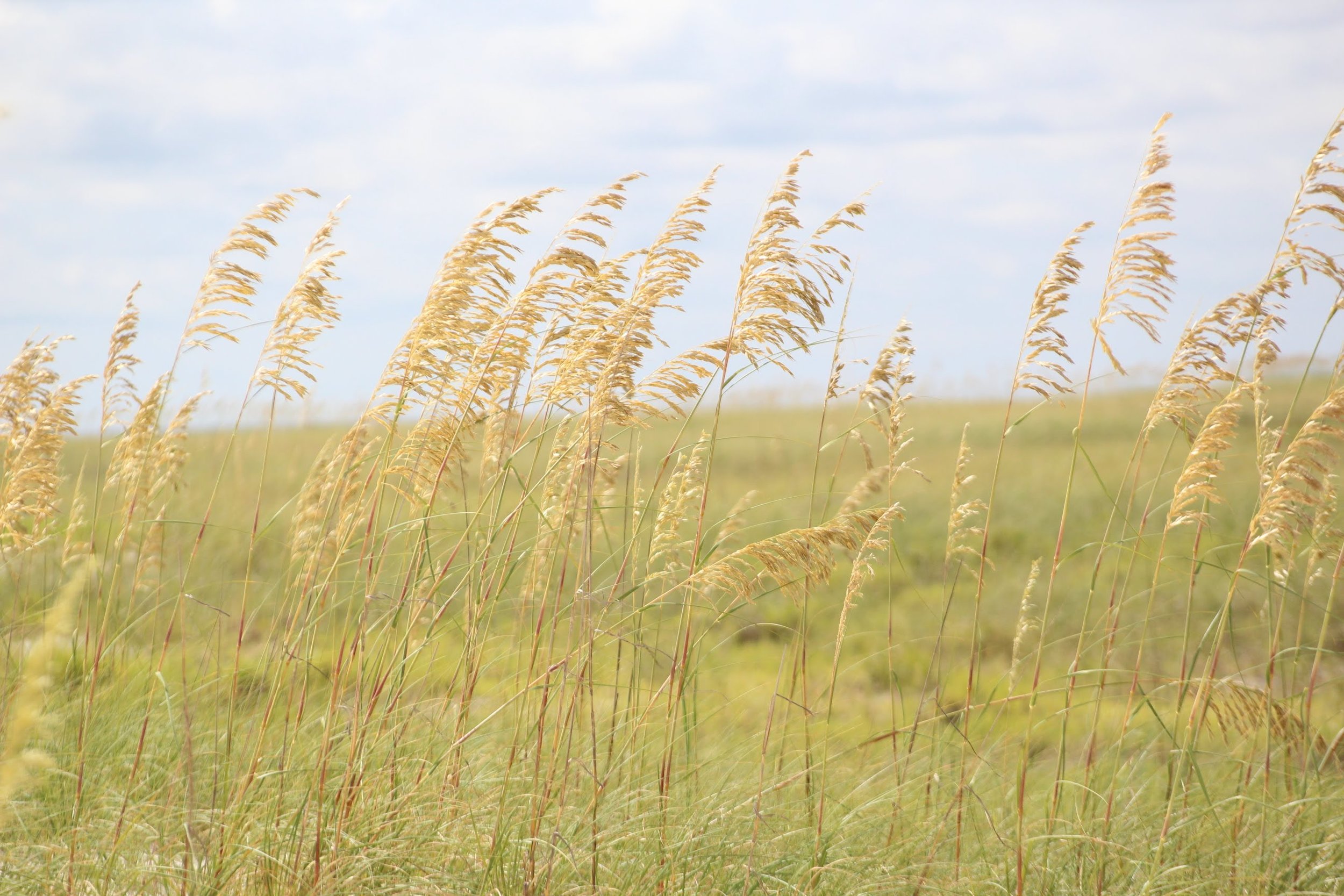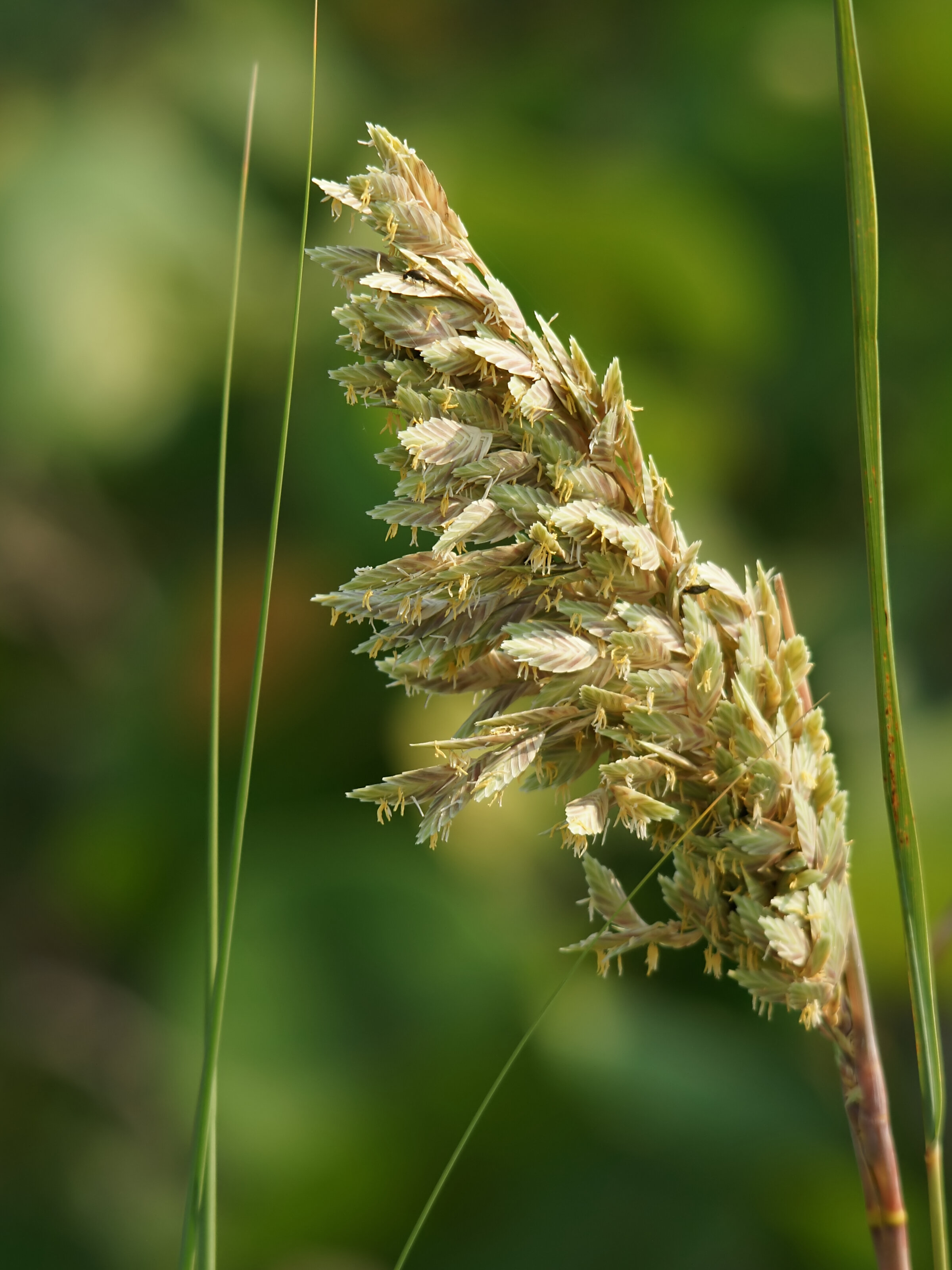Coastal habitats can be really unforgiving to life. Anything that makes a living along the coast has to be tough and they don’t come much tougher than sea oats (Uniola paniculata). This stately grass can be found growing along much of the Atlantic coast of North America as well as along the Gulf of Mexico. What’s more, its range is expanding. Not only is this grass extremely good at living on the coast, it is a major reason coastal habitats like sand dunes exist in the first place. Its presence also serves to protect coastlines from the damaging effects of storm surges. What follows is a celebration of this amazing ecosystem engineer.
Sea oats is a dominant player in coastal plant communities. Few other species can hold a candle to its ability to survive and thrive in conditions that are lethal to most other plants. The ever-present winds that blow off the ocean bring with them plenty of sand and salt spray. Sea oats takes this in strides. Not only are its tissues extremely tough, they also help prevent too much water loss in a system defined by desiccation.
Photo © Don Henise licensed by CC BY 2.0
The life cycle of sea oats begins with seeds. Its all about numbers for this species and seat oats certainly produces a lot of seed. Surprisingly, many of the seeds produced are not viable. What’s more, most will never make it past the seedling stage. You see, sea oat seeds require just the right amount of burial in sand to germinate and establish successfully. Too shallow and they are either picked off by seed predators or the resulting seedlings quickly dry up. Too deep and the limited reserves within mean the seedling exhausts itself before it can ever reach the surface.
Still, enough seeds germinate from year to year that new colonies of sea oats are frequently established. Given the right amount of burial, seedlings focus much of their first few months on developing a complex, albeit shallow root system. Within two months of germination, a single sea oat can grow a root system that is as much as 10 times the size of the rest of the plant. This is because sand is not a forgiving growing medium. Sand is constantly shifting, it does not hold on to water very long, and it is usually extremely low in nutrients. By growing a large, shallow root system, sea oats are able to not only anchor themselves in place, they are also able to take advantage of what limited water and nutrients are available.
It is also this intense root growth that makes sea oats such an important ecosystem engineer in coastal habitats. All of those roots hold on to sand extremely well. Add to that some vast mychorrhizal fungi partnerships and you have yourself a recipe for serious erosion control. The interesting thing is that as sea oats grow larger, they trap more sand. As more sand builds up around the plants, they grow even larger to avoid burial. This process snowballs until an entire dune complex develops. As the dunes stabilize, more plants are able to establish, which in turn attracts more organisms into the community. A literal ecosystem is built from sand thanks to the establishment of a single species of grass.
Photo © Hans Hillewaert / CC BY-SA 4.0
As sea oats mature, they will begin to produce flowers, and the process repeats itself over and over again. As mentioned above, the sea oats seeds are subject to a lot of seed predation. This means that as sea oat populations grow, more and more animals can find food in and among the dunes. So, not only do sea oats build the habitat, they also supply it with plenty of resources for organisms to utilize.
The power of sea oats does not end there. Because they are so good at controlling erosion, they help stabilize the shoreline from the punishing blow of storm surges. Dune systems, especially those of barrier islands, help reduce the amount of erosion and the momentum of wave action reaching coastal communities. Many states here in North America are starting to realize this and are now protecting sea oat populations as a result.
Sea oats, though tough, are not indestructible. We humans can do a lot of damage to these plants and the communities they create simply by walking or driving on them. Pathways from foot and vehicle traffic kill off the dune vegetation and create a path of least resistance for wind, which quickly erodes the dunes. Apart from that, development and resulting runoff also destroy sensitive dune communities, making our coastlines that much more vulnerable to the inevitable storms that threaten their very existence.
As our climate continues to change at an unprecedented rate and storms grow ever stronger, it is very important that we recognize the role important species like sea oats play in not only providing habitat, but also protecting our coastlines. Dune stabilization and restoration projects are growing in popularity as a cost effective solution to some of the threats facing coastal communities. Among the many techniques for restoring dunes is the planting of native dune building species like sea oats. If you live near or simply like to enjoy the coast, please stay off the dunes. Foot and vehicle traffic make quick work of these habitats and we simply cannot afford less of them.
Watch our short film DUNES to learn more about these incredible ecosystems.





